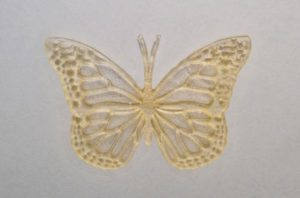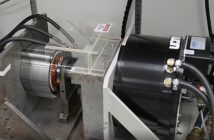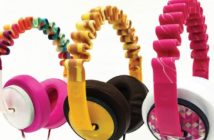Researchers at U of T Scarborough have for the first time turned waste cooking oil from a local MacDonald’s deep fryer into a high-resolution, biodegradable additive manufacturing resin.
The waste cooking oil has significant potential because it’s cheaper to make and the plastics made from it can break down naturally compared to conventional additive manufacturing resins.
Plastics are a problem is because nature hasn’t evolved to handle human-made chemicals,(…), Because we’re using what is essentially a natural product, in this case fats from cooking oil, nature can deal with it much better.”
-Professor Andre Simpson, who developed the resin at U of T Scarborough in Toronto, Canada.
The professor bought a 3D printer about three years ago. After realizing the molecules of commercial resins were similar to fats in cooking oils, he wondered whether one could be created using waste cooking oil.
The first challenge was to get the waste cooking oil. After contacting all major national fast food chains, the only one to respond was McDonald’s. The oil used in the research was from a local outlet in Scarborough.
The professor and his team used a straightforward one-step chemical process in the lab, using about one litre of used cooking oil to make 420ml of resin.
The resin was able to print a plastic butterfly that showed features down to 100 micrometres, and was structurally and thermally stable, meaning it wouldn’t crumble or melt above room temperature.
“We found that turning McDonald’s waste cooking oil has excellent potential as a 3D printing resin,” said Simpson, an environmental chemist and director of the Environmental NMR Centre at U of T Scarborough.

The 3D printing resin Butterfly
Researchers in the Simpson lab were able to print this plastic butterfly using 3D printing resin derived from the waste cooking oil.
The results of the research are published in the journal ACS Sustainable Chemistry & Engineering. Simpson received funding from the Natural Sciences and Engineering Research Council of Canada (NSERC), the Canada Foundation for Innovation (CFI), Government of Ontario, and the Krembil Foundation.
Used cooking oil is a major global environmental problem, with commercial and household waste causing serious environmental issues, including clogged sewage lines caused by the build-up of fats.
While there are commercial uses for waste cooking oil, Simpson says there’s a lack of ways to recycle it into a high value commodity such as an AM resin. Simpson adds that creating a high value commodity could remove some of the financial barriers with recycling waste cooking oil since many restaurants have to pay to dispose it.
Conventional high-resolution resins can also cost upwards of $525 USD per litre because they’re derived from fossil fuel oils and require several steps to make.
All but one of the chemicals used to make the resin in Simpson’s lab can be recycled, meaning it could be made for as low as $300 USD per tonne, which is cheaper than most plastics.
It also cures solid in sunlight, opening up the possibility of pouring it as liquid and forming the structure on a work site.
Another key advantage is biodegradability. They found that after burying a 3D plastic object made with their resin in soil, it lost 20 per cent of its weight in about two weeks.
“If you bury it in soil microbes will start to break it down because essentially it’s just fat,(…), It’s something that microbes actually like to eat and they do a good job at breaking it down.”, says Simpson.
Find More Additive Manufacturing Industry News
on
additivenews.com
- Sources & More information
-
Related article categories:
IndustryArticle and featured image:
Source:
bioplasticsmagazine.com, https://www.bioplasticsmagazine.com/en/news/meldungen/20200214From-cooking-oil-to-environmentally-friendly-3D-printing-resin.php published on Feb14 2020, re-edited and published by João Andrade on Feb19 2020;
Featured Image & Article Photo:
“” “”




